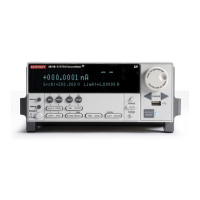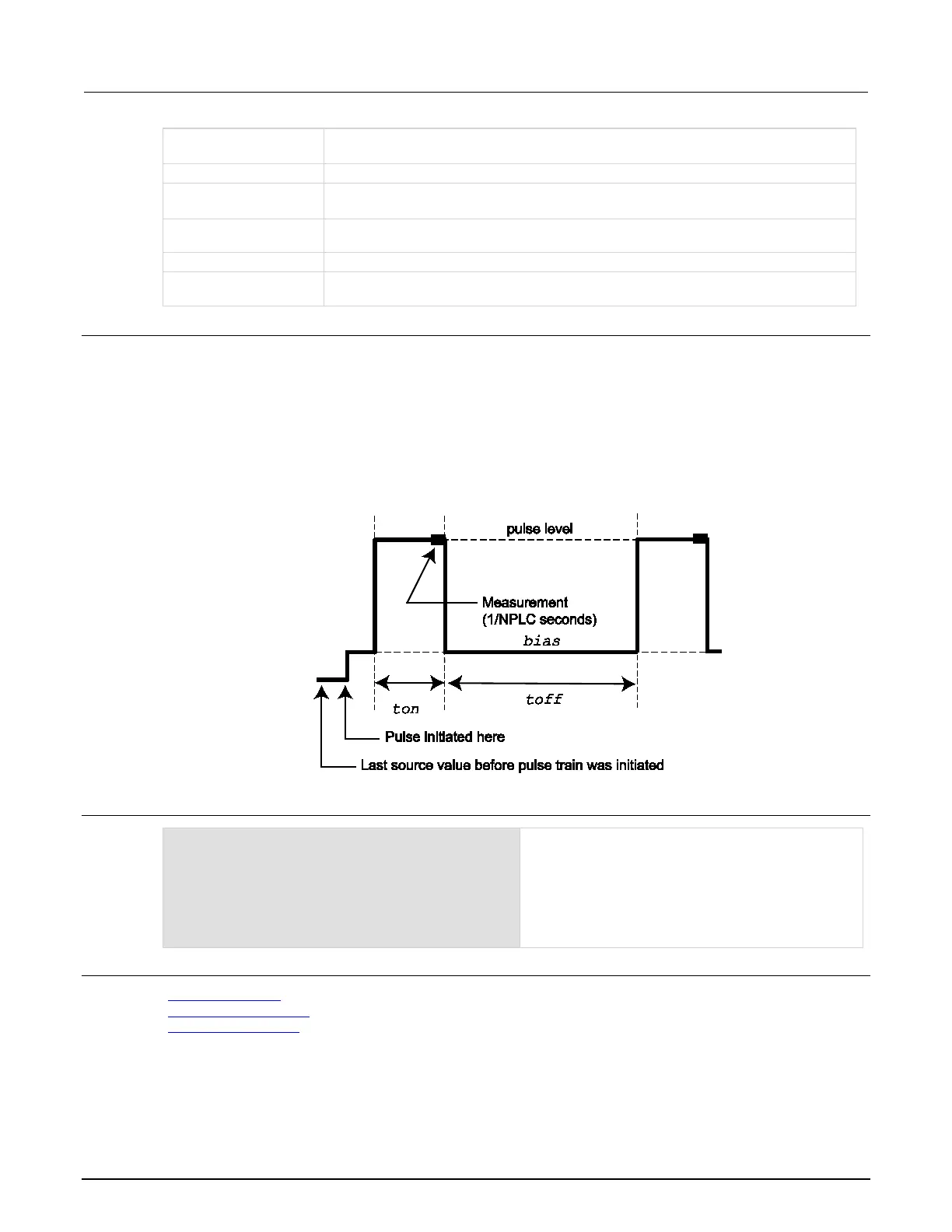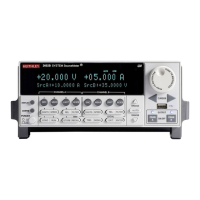7: TSP command reference Series 2600B System SourceMeter® Instrument
7-34 2600BS-901-01 Rev. B / May 2013
Reading buffer where pulsed measurements will be stored; if this is nil when the function is
called, no measurements will be made when the pulse train is initiated
Numeric identifier to be assigned to the defined pulse train
Defines a digital I/O trigger input line; if programmed, the pulse train waits for a trigger input
before executing each pulse
Defines a digital I/O trigger output line; if programmed, the pulse train generates a trigger
output immediately before the start of ton
Specifies the length of time (in seconds) to wait for input trigger; default value is 10 s
Specifies whether or not to abort the pulse if an input trigger is not received; if pulse aborts
because of a missed trigger, a timer timeout message is returned;
or
Details
Data for pulsed voltage measurements are stored in the reading buffer specified by the buffer input parameter.
This function configures a current pulse train with a voltage measurement at each point. Measurements are
made at the end of the ton time.
This function does not cause the specified smu to output a pulse train. It simply checks to see if all the pulse
dimensions can be achieved, and if they are, assigns the indicated tag or index to the pulse train. The
InitiatePulseTest(tag) and InitiatePulseTestDual(tag1, tag2) functions are used to initiate a
pulse train assigned to a valid tag.
Figure 127: ConfigPulseIMeasureV()
Example
ConfigPulseIMeasureV(smua, 0, 5, 10,
0.001, 0.080, 1, smua.nvbuffer1, 1)
Set up a pulse train that uses System SourceMeter
instrument channel A. The pulse amplitude will be 5
and will return to 0 A after 1
ms. The pulse will remain
at 0 A for 80 ms and the voltage limit will be 10 V
during the pulse. The pulse train will consist of only 1
pulse, and this pulse will be assigned a tag index of
1.
Also see
InitiatePulseTest() (on page 7-103)
InitiatePulseTestDual() (on page 7-104)
KIPulse factory script (on page 5-21)

